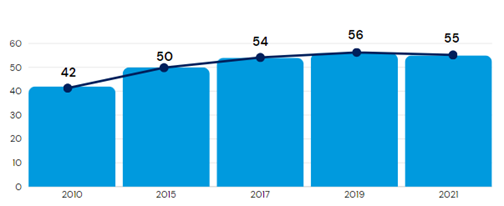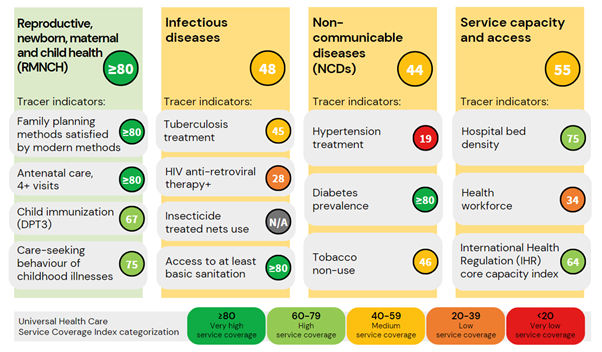Health is a fundamental human right. The best way to achieve it is through universal health coverage (UHC), which means that everyone can receive quality health services, when and where they are needed, without incurring financial hardship. Achieving UHC is no easy feat, but with concrete and coordinated actions, countries can create the conditions in which the right to health is ensured, upheld, and respected for everyone.
The 2023 UHC Global Monitoring Report presents an alarming picture on the state of UHC around the world, even before the COVID-19 pandemic. This report shows that the world is off track to make significant progress towards UHC by 2030 as improvements to health services coverage have stagnated since 2015, and the proportion of the population that face catastrophic levels of out-of-pocket health spending has increased. Globally, in 2019, about two billion people struggled financially because of health costs, including 344 million people living in extreme poverty.
According to the report, Indonesia has made progress in reducing the number of people facing catastrophic out-of-pocket health spending of at least 25% of household consumption from 0.9% in 2017 to 0.4% in 2018. However, this 0.4% in 2018 means there are more than a million Indonesians being pushed into poverty because of their health spending.
Meanwhile, Indonesia’s UHC service coverage index (SCI), which had increased slowly from 42 in 2010 to 56 in 2019, decreased again to 55 in 2021.

Figure 1. UHC service coverage index in Indonesia, 2010-2021
Source: 2023 Universal Health Coverage global monitoring report
This index captures indicators of essential services coverage in the area of reproductive, maternal, newborn and child health (RMNCH); infectious diseases control; non-communicable diseases (NCDs); and service capacity and access. For these four areas, only RMNCH is in the “very high service coverage” category, while the three others are in “medium service coverage” category.

Figure 2. Sub-indices and tracer indicators for UHC SCI Index of Indonesia
Source: 2023 Universal Health Coverage global monitoring report
These data show that Indonesia must address intervention coverage gaps and accelerate progress in improving coverage and health outcomes, particularly in infectious diseases and noncommunicable disease control and provision for human resources for health.
Achieving UHC by 2030 requires substantial public sector investment. Governments and partners must act swiftly, using evidence-based approaches to shift health systems towards primary care. This ensures fair access to essential health services and financial protection. Additionally, robust health information systems providing timely data are essential. These changes are vital as we navigate the challenges posed by the COVID-19 pandemic and broader issues such as economic, climate, demographic, and political trends, which could threaten global health progress.
The 2023 Universal Health Coverage global monitoring report is available for download here.

